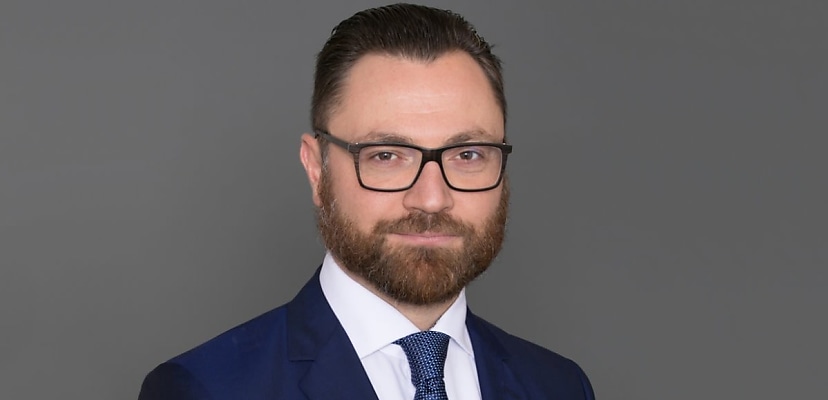Share this article on:
Powered by MOMENTUMMEDIA
Breaking news and updates daily.
The underground world of deepfake videos seems to be circulating social media and news headlines, now more than ever, Brett Beranek at Nuance Communications writes. In 2021, it was imitations of Tom Cruise, and earlier this year, imitations of Ukrainian President Volodymyr Zelensky. Such videos are a scary wake-up call of the relentless capabilities of cyber criminals and, as a result, rightfully raise concerns for organisations using biometric security for customer authentication.

We’ve all seen just how convincing they are, and after all, if a fraudster can recreate a customer’s face and voice with deceptive accuracy, can’t they gain access to customers’ biometrically secured accounts? The good news is that the answer is no; it’s not that simple — especially in the case of voice biometrics.
What’s important here is the differentiation of voice from other biometric identifiers and just how far the technology has developed in the last 10 years.
Why identifying someone based on their voice is comparatively difficult
Other biometric technologies rely on characteristics that are static in nature. For example, fingerprints and facial dimensions don’t change throughout the day. But we all know how our voice sounds in the early morning varies from how it sounds in the afternoon. Our voices can very easily change based on whom we’re interacting with, whether it’s a conscious or subconscious decision. As voices are so much more variable, analysis of many more data points is required to confidently identify the human to whom it belongs.
Voice biometrics technology originated from forensic science when voice data was analysed via tapped phone conversations between criminals. With a long enough conversation, and sufficient time to perform the analysis, law enforcement could identify an individual and build a case.
Thankfully, since those early days, the technology has advanced enough to allow organisations to use voice biometrics as a secure, seamless customer authentication factor.
With the advancement of deep neural networks, there’s no need to spend hours analysing lengthy audio to confidently identify the person speaking. It can be done in as little as half a second of natural speech without an agreed passphrase.
Historically, the complexity of this technology has only been within reach of large organisations. A recent major step forward has been the accessibility to the software that delivers these very complex algorithms, making voice biometrics authentication available to smaller organisations, such as regional banks, community banks, and credit unions.
How voice biometrics technologies are beating deepfakes
It’s no surprise that criminals have spent the last decade looking for ways to fraud voice biometrics, looking for cracks to exploit authentication processes. Rest assured, the companies producing this technology have not been watching idly by, but rather putting in the work to ensure they remain one step ahead.
It was always known to those of us working in the voice biometrics space that criminals would attempt to trick the technology by playing back recordings of other people’s voices. To prevent this, voice biometrics solutions were developed with these potential threats in mind, ensuring the software can differentiate between a real, live human voice and one emanating from an audio file.
Over the years, as the technology to synthesise or “deepfake” voices become more powerful and accessible, the same deep neural networks that have unlocked voice biometrics’ true potential are being leveraged to protect customers, and blockade efforts from fraudulent actors.
When a computer makes an attempt to synthesise a voice, there are always tiny, telltale signs and anomalies that give away it’s a deepfake. Voice biometrics technology can detect the smallest of differences between a natural voice and a synthetic voice, and deny criminals access.
It’s important to keep the threat from deepfakes in perspective
Deepfake technology is incredibly resource-intensive, so much so that malicious actors rarely use it due to its advanced sophistication. Right now, the lion’s share of fraud is still based on more “run-of-the-mill” tactics such as identity theft, synthetic identities, and policy abuse, all of which voice biometrics technology can help to prevent. Such a solution must be an important consideration for organisations looking to protect their customers from fraud and deploy technology that reduces risk.
There’s no doubt that voice biometric providers will continue to anticipate such emerging threats in the world of cyber crime and effectively neutralise them before they materialise.
It’s an exciting time for the technology, particularly in the next 10 years, as biometrics security enables a new world of remote customer interactions. It’s not uncommon for organisations to still ask customers to attend a branch or store to perform very high-risk activities. Those days will soon be gone for good. By combining the power of voice and layering it with other authentication factors and AI, we’re on course for an era in which even high-risk interactions can be delivered remotely, with new simplicity and incredibly high levels of confidence.
Brett Beranek is the vice-president and general manager, security and biometrics line of business, Nuance Communications.
Be the first to hear the latest developments in the cyber industry.